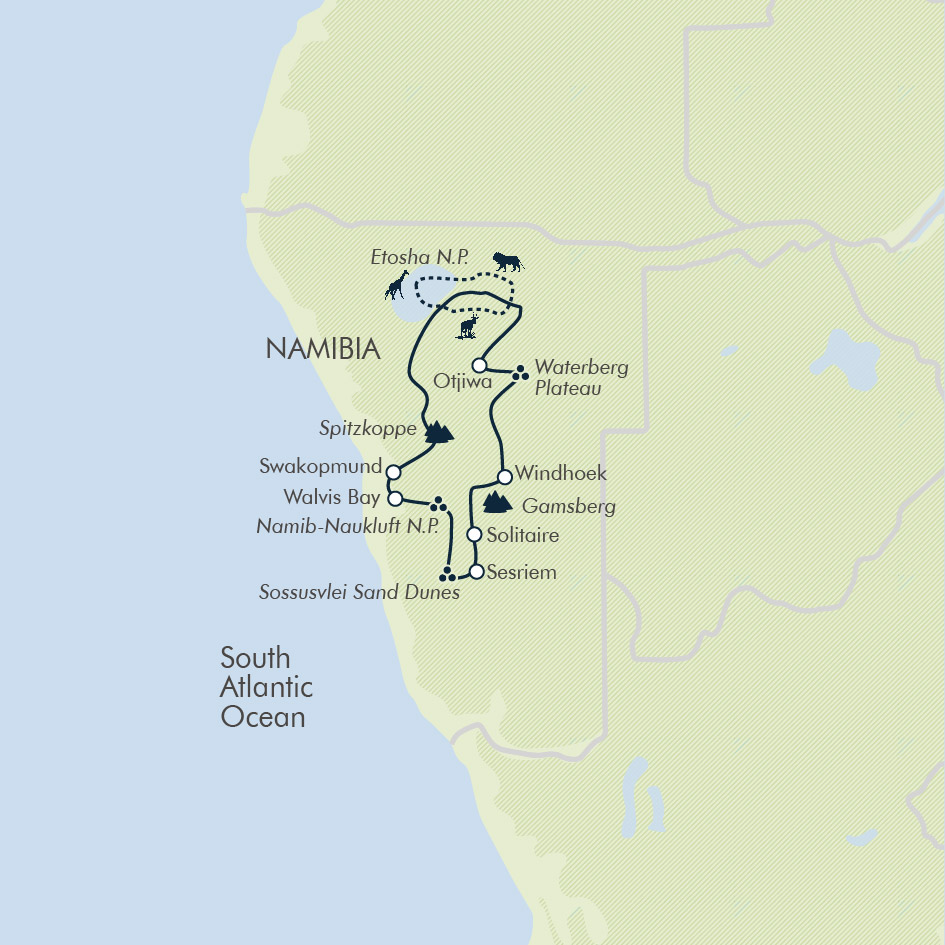- Key Info
- Overview
- Photos
- Dates

- Cycle through the Namibian wilderness with a like-minded group
- Safari in Etosha National Park, searching for lions, elephants and more
- Hop on a fat bike to explore the Swakopmund dunes
- Witness sunrise from the summit of a towering dune in Sossusvlei
- Camp under the starry Namibian sky, visiting floodlit waterholes where wildlife gathers
On this cycling adventure in Namibia, we spend seven nights camping and four nights in hotels – bring your swimwear, most of the places we stay have pools. Below is a rundown of the hotels we typically use and some advice on camping.
Hotels
Windhoek: Arebbusch Lodge (night 1)
Our guesthouse is only a 10-minute drive from the city centre yet is spacious with two swimming pools and one of the best pizzerias in the capital. It also has a beautiful garden with indigenous trees.
Swakopmund: Prost Hotel (nights 5-6)
After a few camping nights, we hop back into a clean, comfy room with a stay at the Prost Hotel. When we’re not out riding dunes on fat bikes, this 28-room hotel is well-placed for visiting Swakopmund and its pubs, restaurants, and cake and coffee shops.
Waterberg: Waterberg Resort (night 11)
We spend our final night of the trip in the comforts of the Waterberg Resort, where we can sink into a comfy bed. Find further relaxation in the swimming pool and enjoy our last night together in the restaurant and bar.
Camping
Namibia is a fantastic destination for camping. The landscapes are grand and unpopulated, wildlife is widespread plus the campsites are clean and well maintained. All communal camping gear is provided, including spacious two-person dome tents, thick foam mattresses and folding stools, although you need to take your own sleeping bag and pillow.
In Etosha, we stay within the national park itself – a huge plus for any animal lover and a highlight of the trip for many. The resorts we use (nights 8-9) are either Okaukuejo, Halali or Namutoni. Each location has a restaurant, swimming pool and bar but the highlights are the flood-lit waterholes where wildlife regularly stops to drink and bathe.
Worth knowing
Due to the limited amount of accommodation within Etosha National Park, it may be necessary to sleep outside the park on some or all of the nights we are there.